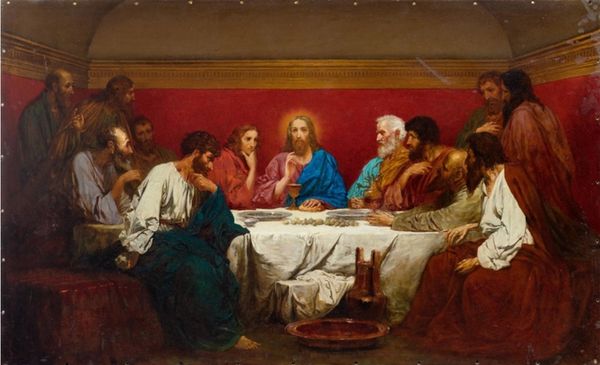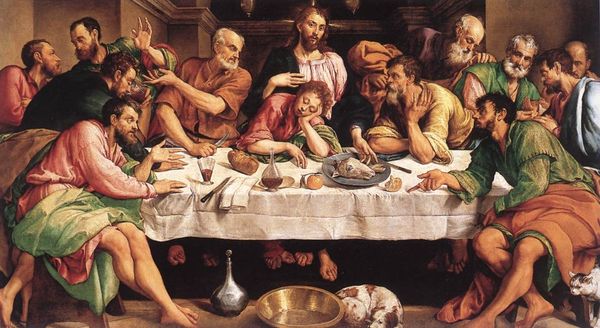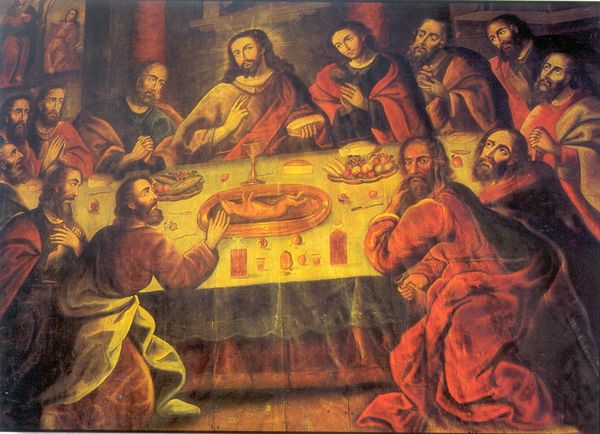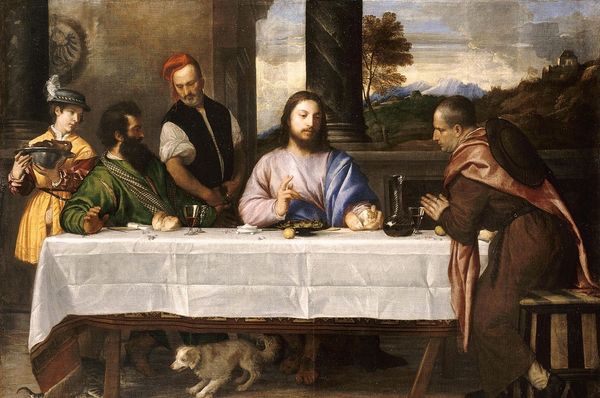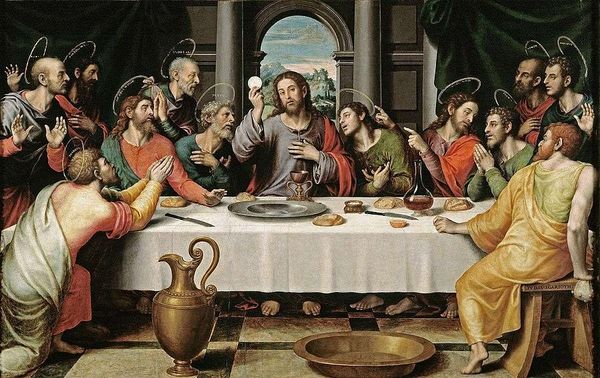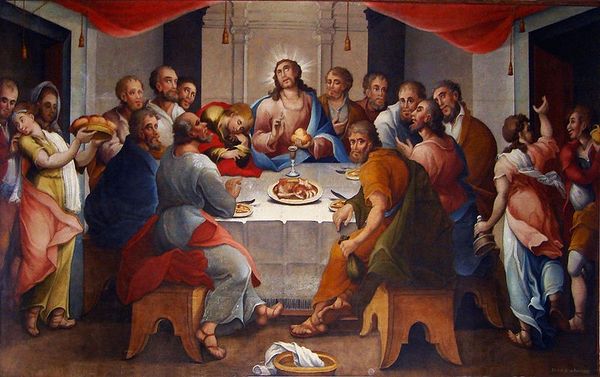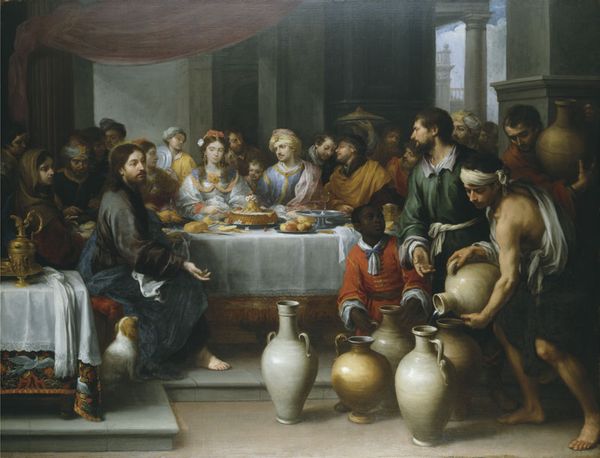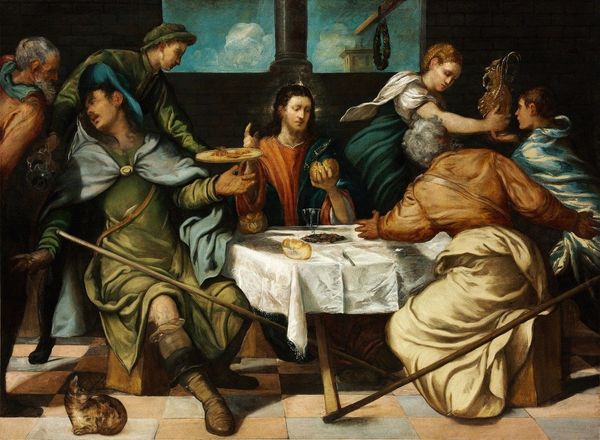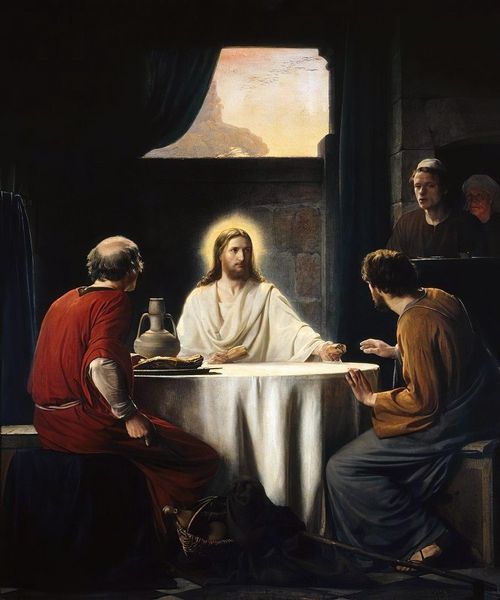
panel, painting, oil-paint
#
portrait
#
panel
#
painting
#
oil-paint
#
figuration
#
11_renaissance
#
group-portraits
#
christianity
#
painting painterly
#
history-painting
#
northern-renaissance
#
christ
Dimensions: 48.5 x 85.3 cm
Copyright: Public domain
Editor: Here we have Matthias Grünewald's "Last Supper (Coburg Panel)" from around 1500, an oil painting on panel. It definitely presents a different take on the scene than, say, da Vinci's version. There's something quite intimate and also unsettling about it. What do you make of this, considering the traditional depictions of this moment? Curator: Unsettling, yes! And so very Grünewald. He takes the sacred, the known, and turns it inside out. Notice how he doesn't strive for ideal beauty? The faces are real, almost rough. It's as if we are flies on the wall in this room witnessing a real and human moment that carries the full weight of what will happen next. I always wonder, who is he inviting us to be? Are we to be simply voyeurs or active witnesses who share in the experience? Editor: That’s a powerful way to look at it. The expressions are far from serene, and there's such a closeness, like a family crammed around a table. But it still feels foreign and remote. I do like how human these figures look—especially Judas. But why is everyone clumped together and pushed to the foreground? Curator: Exactly. And that's key! Grünewald abandons the linear perspective of the Italian Renaissance. He forces us to confront the scene head-on. Think about the spiritual anxieties of the time, the fear of death and judgment...He emphasizes those emotions. Also, do notice the different emotional reactions to Christ’s prediction; denial, sorrow, outrage, acceptance – it’s all a potent cocktail of emotions. Do you sense how the characters react to this tragic foreshadowing in contrast with standard and static depictions? Editor: Yes, it feels much more personal. It makes me wonder how people at the time perceived such a raw and unorthodox painting. Curator: Good point. They were likely moved, maybe even disturbed, in a way we struggle to comprehend today, accustomed as we are to seeing this moment represented with decorum. Editor: I think it gives the piece a kind of lasting appeal; this interpretation feels timeless and, oddly, much more believable. Curator: Absolutely! It avoids the gilded prettiness to remind us what is at stake for these very real human beings. Grünewald’s personal connection helps to bridge time and place and reach out from five centuries away.
Comments
No comments
Be the first to comment and join the conversation on the ultimate creative platform.
